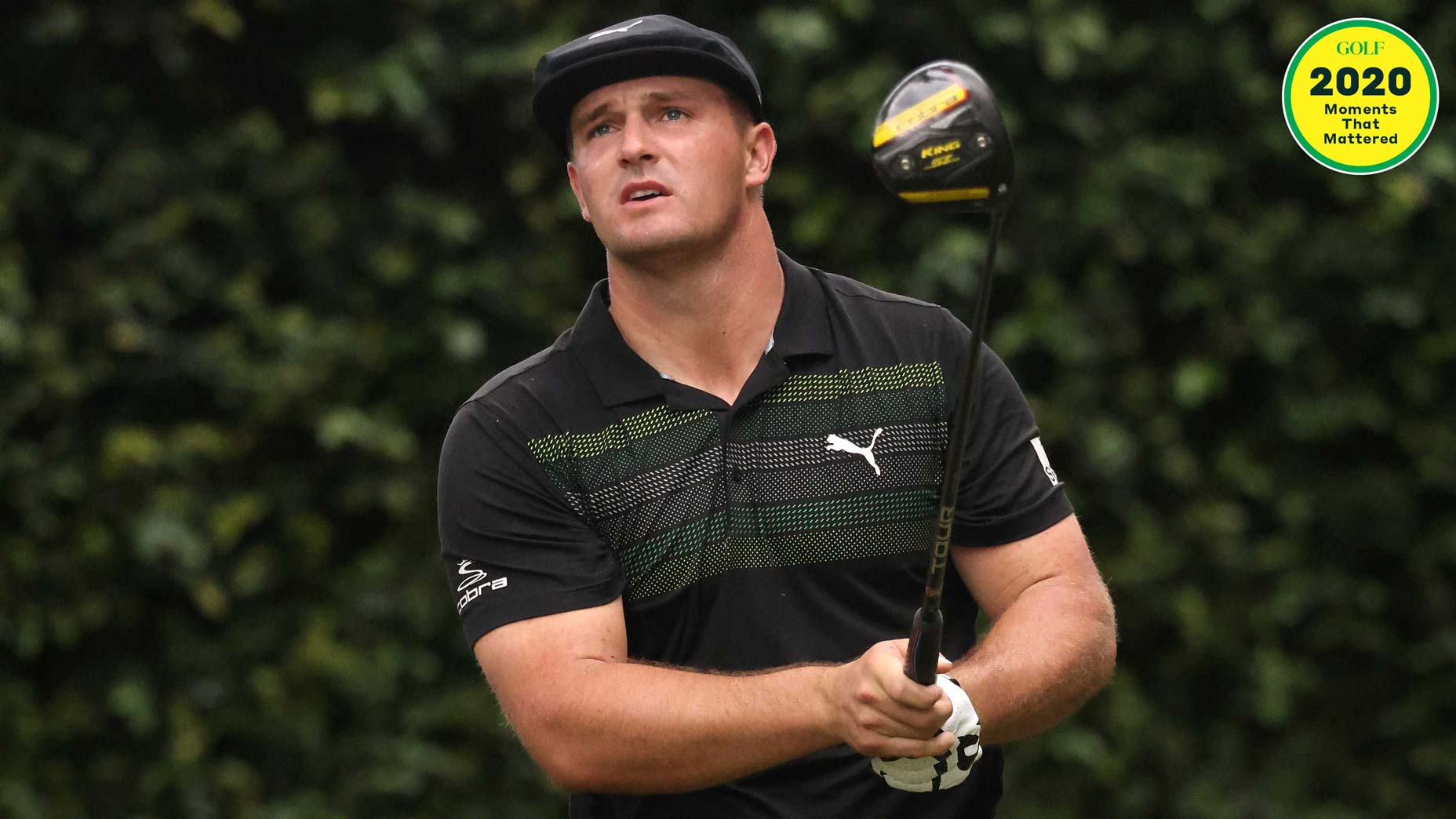Ed. note: GOLF senior writer Alan Shipnuck is counting down the six most impactful and enduring stories from a golf year that was at once weird and wonderful, unnerving and uplifting.
Previously: The PGA Tour plays on | The young’uns are coming | Popov’s improbable rise | Dustin Johnson, superhero
***
In 2020, Bryson DeChambeau won the U.S. Open, the PGA Tour stop outside of Detroit and racked up eight other top-10 finishes. He finished 1st in strokes gained off the tee, 6th in money ($4.99 million) and 7th in scoring average (69.24). He had a historically great run on the greens, making 91.2% of his putts from 10 feet and in, the best average recorded since Jim Furyk in 2002.
Then there was DeChambeau’s whirlwind of off-course activities and the endless buzz around him: his enigmatic mini-movies posted to social media; his stream-of-consciousness musings while playing video games on Twitch; the obsession (his and others’) with clubhead speed; the fascination with his shake-and-potatoes diet (protein shakes, that is); the end-is-nigh cacophony from purists as his newfound length off the tee remade the sport; and a million other little ways that Bryson’s persona threatened to overwhelm his accomplishments.
But for all the noise, what is indisputable is that, DeChambeau, 27, is now on a Hall of Fame trajectory and 2020 is the key year in the timeline.
His NCAA and U.S. Amateur triumphs hinted at a rare talent.
“Ah talent,” Bryson once said, putting a finger to his temple and pantomiming blowing his brains out. “I hate that word.”
Indeed, the story of DeChambeau’s success is unceasing self-improvement and curiosity, married to certain physical gifts. In 2020, he turned the full force of his obsessive work ethic to the quest of massively increasing his driving distance. That meant transforming his body and equipment, a process that began a year ago during the off-season and then accelerated during the Tour’s three-month coronavirus hiatus in the spring.
Once play resumed DeChambeau immediately began reshaping the Tour in his image; the epic length of his tee shots was a game-changer, but just as impactful was his unshakable belief that he had discovered a more efficient way to play the game. At the Rocket Mortgage Classic, in July, DeChambeau rendered obsolete any strategy the course hoped to present, bashing his way to victory. (Along the way he did offer a cheeky apology to the esteemed course architect Donald Ross, who had designed the host venue.)
It’s hard to overstate the impressiveness of DeChambeau’s transformation; it was as if Tom Brady gained 40 pounds, made himself a fullback and then rushed for seven touchdowns to lead his team to victory. But could DeChambeau’s bruising new style prevail at any of golf’s Super Bowls, with their more penal setups? A strong run at the PGA Championship offered a clue, and then at the U.S. Open, in September, he overwhelmed one of the game’s brawniest courses, Winged Foot. The revolution was complete.
“It’s honestly hard to process what Bryson accomplished,” says Andy North, who won two U.S. Opens the old-fashioned way. “In so many ways it’s like he’s playing an entirely different game.”
Player of the year votes may tell a slightly different story, but in 2020 golf belonged to Bryson. His impact could be measured in magazine covers, social media impressions or the number of colleagues who suddenly began swinging for the fences, straining to keep up. But nothing is as tangible as the U.S. Open trophy, the glittering culmination of one player’s quest to win on his own terms, as always.
